Tel: 01474 876800 • 24 Hr: 01474 876809 • Client Portal
- Who We Are
- What We Do
- Build
- Carpentry
- Building Works
- Commercial Flooring
- Commercial Glazing
- Commercial Locksmith
- Commercial Painting & Decorating
- Commercial Plastering
- Commercial Plumbing
- Commercial Refurbishment
- Commercial Roofing
- Design & Construction
- Electrical Installation
- Hard & Soft Landscaping
- Mechanical & Electrical
- Office Builders
- Office Fit Outs
- Office Heating
- Office Partitioning
- Office Relocation
- Site Management
- Maintain
- 24 Hour Helpdesk
- Access Control
- Air Conditioner Repair
- Air Conditioning Servicing
- Commercial Boiler Servicing
- Commercial Electricians
- Commercial Ground Maintenance
- Commercial Pest Control
- Commercial Property Maintenance
- Drain Unblocking
- Emergency Callouts
- Emergency Light Testing
- Facilities Management
- Fire Alarm Testing
- Fire Extinguisher Testing
- Fire Sprinkler Testing
- Fixed Wire Testing
- Handyman Service
- Lift Servicing
- Office Health & Safety
- PAT Testing
- Planned Preventative Maintenance
- Reactive Maintenance
- Roof Maintenance
- TMV Maintenance
- Water Hygiene
- Clean
- Build
- How We Do It
- Why Use Us
- Contact
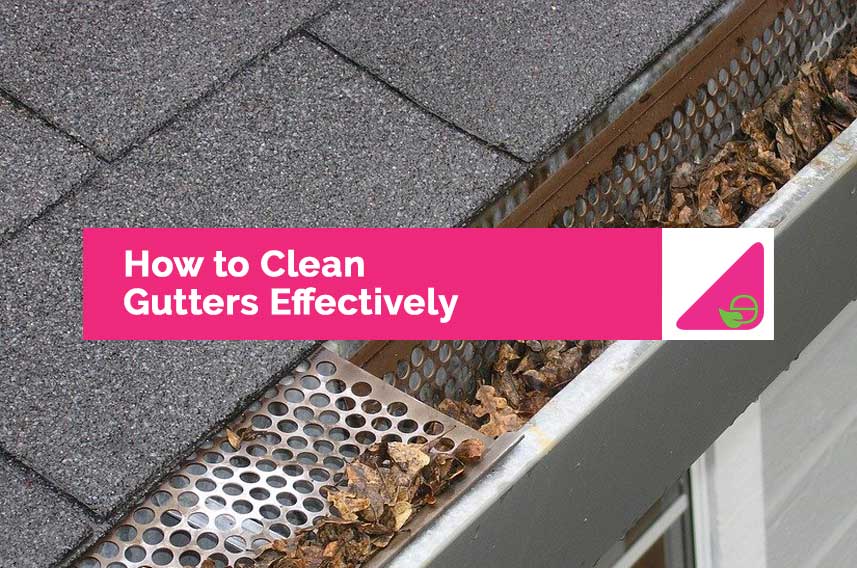
How to Clean Gutters Effectively
Rain gutters have an important purpose – that of directing any rainwater safely to prevent damage to the property when there is severe runoff.
However gutters can only serve their purpose properly if they are not blocked with debris such as moss, leaves and other deposits.
Naturally it is normal for such debris to end up in gutters, and so it’s important for you to ensure that you clean your gutters on a regular basis to avoid any clogs.
Table of Contents
How Often Should You Clean Gutters?
As a general rule of thumb, you should clean your gutters at least once a year.
It’s best to do so in the autumn to ensure that they are unclogged before heavy rainfalls start.
If possible, it is also a good idea to clean them towards the end of spring as well, since during this season trees and flowers expel seeds and pollen which could easily end up clogging gutters.
However in case there are overhanging trees, it is best to clean your gutters more than just once a year as there will be a higher incidence of leaves and debris falling into them, causing clogs.
It is also a good idea to inspect, and if needed, clean gutters after stormy weather.
Tools & Materials Needed
There are various tools and materials which you will need to clean gutters well, including:
- a sturdy, extendable ladder
- a heavy-duty bucket, or two
- large plastic bags
- waterproof work gloves, ideally puncture resistant ones
- a gutter scoop
- garden hose
- cleaning solution
- cleaning brush
- tarpaulin
Prepare Your Ladder
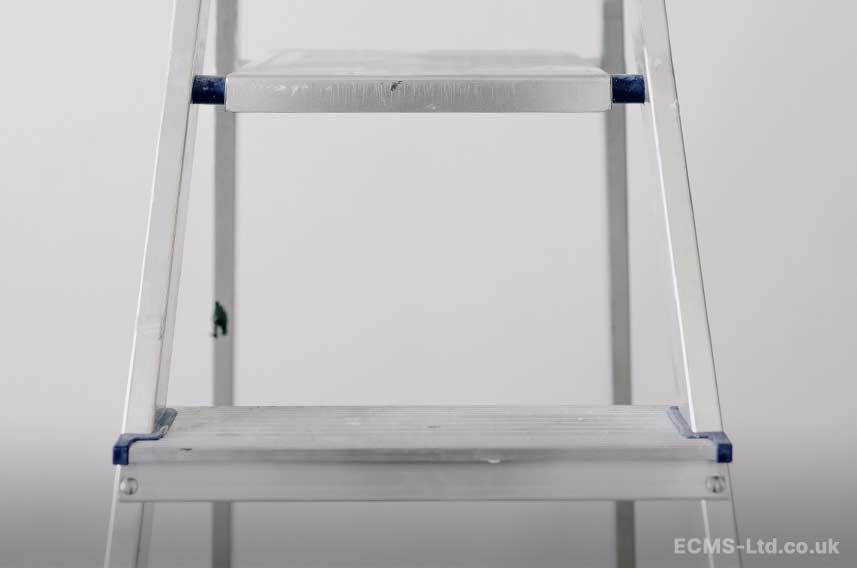
Unfortunately one of the main disadvantages of cleaning gutters is that you will need to work at heights, and so a ladder is a must.
Pick an end to start cleaning and move the ladder into position.
Make sure that both feet are well planted on a solid base, and that it is level.
Never place a ladder on a slope, and as much as possible avoid putting it in grass as it will probably be unstable and unsafe due to sinkage.
In cases where you will need to lean in order to get a proper view of the gutters, it is highly recommended to use a ladder stay or a ladder standoff.
These basically attach to the top part of the ladder and rest safely to the wall.
However the ladder will be slightly away from the wall as a result, so that you will not need to lean over in order to access the gutters.
Overreaching can easily lead to the ladder to become unstable, so these attachments are ideal.
Clear & Dispose Large Debris
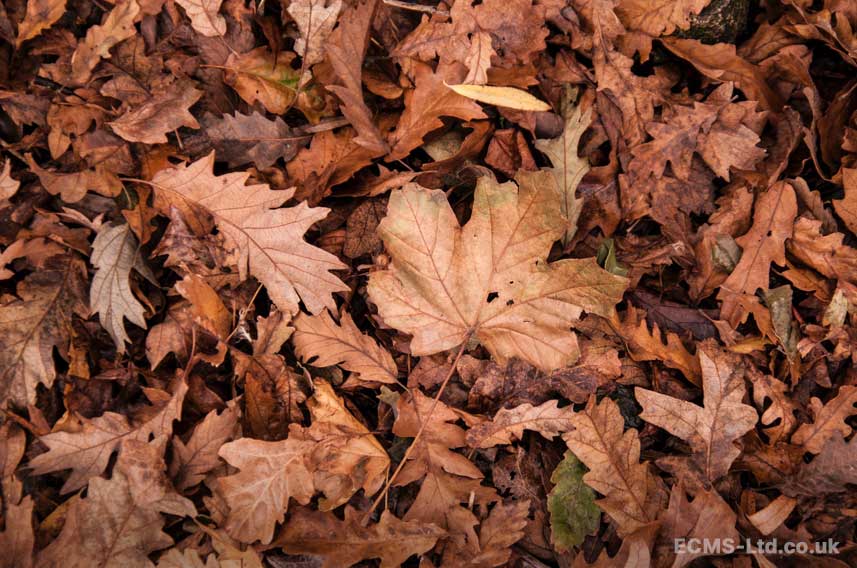
As you clean gutters you will be dealing with large debris.
While scraping out this rubbish, it is best to have a convenient place ready where to place it.
If most of the debris consists of leaves and twigs, there is nothing much to worry about as you can simply let it go down onto the floor, where you can collect it once you are done.
But in case you are going to encounter a stagnant sludge, you need to be well prepared as you do not want to end up with more messy piles to clean up from the floor later.
So it is best to prepare some large plastic bags, as well as one or two heavy-duty buckets.
The bags will work fine for dried waste as it can then be compressed and tied up for disposal.
You can also tie the plastic bag conveniently to the ladder.
For the damp or wet waste however, you will want to use buckets.
In order to place the bucket at hand while you are on the ladder, it is a good idea to use a hook to hang it.
Flush the Gutters
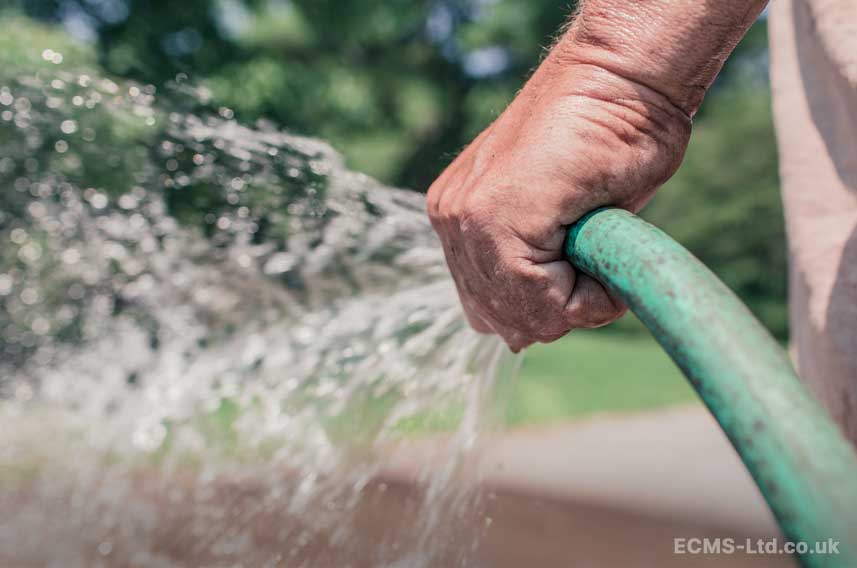
You will need to start removing the waste by scooping it by hand, or with a trowel or specialised gutter scoop.
Try to get as much waste out as you can.
However avoid pushing the scoop or trowel too hard since it could cause damage to fragile guttering.
Work in a small area at a time to clear it well.
Proceed to subsequent areas by moving the ladder accordingly, until you reach the end of the gutter run.
Once all the major debris has been cleared from the gutters, you can flush them down to remove smaller waste matter and clear them properly.
You can do this by:
Using a Hose or Pressure Washer
This is the easiest and most convenient way to go about it.
Run the hose with a good flow so as to wash remaining matter down the gutters and into the downpipe.
Using a Bucket of Clean Water
Tip it into the gutter so that the flow will carry off remaining waste to the down-pipe.
Use a Specialist Gutter Cleaner
This is basically a long pole that has a hose running through it.
On one end there is a hose attachment, and on the other end a sprayer attachment.
In this way the water can be directed into the gutter.
Remove Clogs
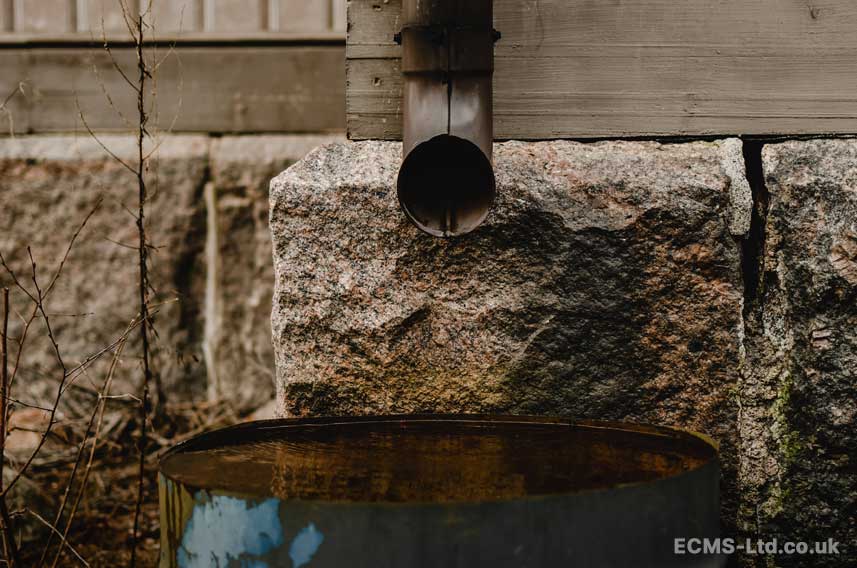
The downpipe is an important part of the guttering system.
Over time, if it is not cleaned and maintained properly, it can easily get blocked.
With leaf matter, debris and other waste items being washed down, clogs can occur.
You may notice that there is a blockage if large amounts of water start accumulating at the base of the gutters.
Often there will be a covering of water over the downpipe’s mouth that remains there or drains away really slowly.
In order to deal with clogs, start tapping up and down the downpipe using a screwdriver or a similar tool.
If a hollow sound, like an echo can be heard, then there should not be any blockages.
But if you hear a dull thud, then there is probably a blockage.
Removing clogs depends on how bad the blockage is.
Often pushing the hose down the down pipe can be enough to clear the blockage.
With the water pressure, the blocked waste will be forced out.
If however this does not suffice, you will need to start pushing with a long thin tool so as to clear the blockage.
In some cases, the downpipe can be unscrewed from the wall and then removed from the running outlet.
Whereas in other cases when it runs straight into the ground, you will have to cut it off near the base to remove it and clean it out properly.
Once the clog is cleared, you will then have to re-attach it.
Check Drainage Flow
Once the cleaning job is done, it is important to check the drainage flow.
You want the gutters and downpipe to be blockage free.
It is important to ensure that no waste was dislodged from the downpipe and travelled down into the drain or soakaway, as it could then create a blockage at that point.
Make sure to check that the downspouts end in an elbow joint.
At times some may have gotten detached or a bit loose.
If this is the case make sure to see to it.
Also, look for erosion underneath the downspouts.
If you notice any signs that the dirt at the property’s foundation is being washed away, it is best to place splash blocks underneath each downspout in order to absorb the impact that the discharged water makes, while also helping to direct the flow.
You may also opt for flexible extensions which can direct the water further away from the foundation.
Sealing & Repairing
While you are at it, it is best that you take the opportunity to run some repairs.
While cleaning the gutters you may have noticed some damaged parts such as cracks, splits, or joints where the sealing is not up to scratch.
Check that rubber sealing that runs around the mouth of the joints is flush with the gutters so that there is a proper sealing.
Any cracks or splits should be dealt with accordingly.
While it is not always practical to have those sections replaced, you may apply some gutter repair mastic.
Also, check over all the downpipes so as to repair where necessary.
Check Slope & Fastenings
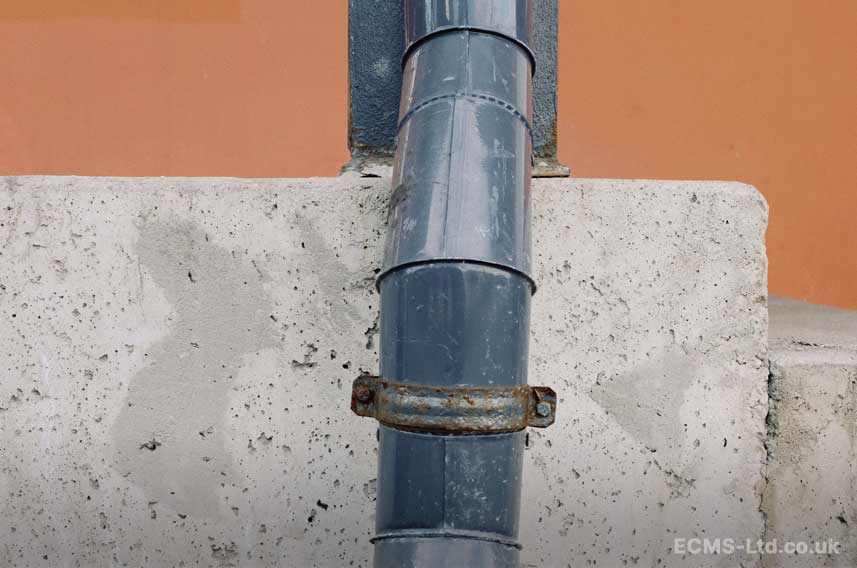
While you are cleaning the gutters you will also be able to inspect their slope.
Over time it is quite normal for the fasteners that attach the gutters to loosen up a bit.
This results in a change in the slope, and this could lead to standing water.
Try pouring some water into the gutters and watch the way it moves.
If it moves towards the downspout then all is well.
But if it starts pooling at some point, you will need to adjust the slope accordingly.
Simply undo the fasteners, realign, and reattach the gutters once you are ready.
Final Clean Up
Now that you are done cleaning as well as inspecting and repairing your gutter system you may start cleaning up.
Clean the tools you used, and dispose of the waste properly.
Preventing Future Clogs
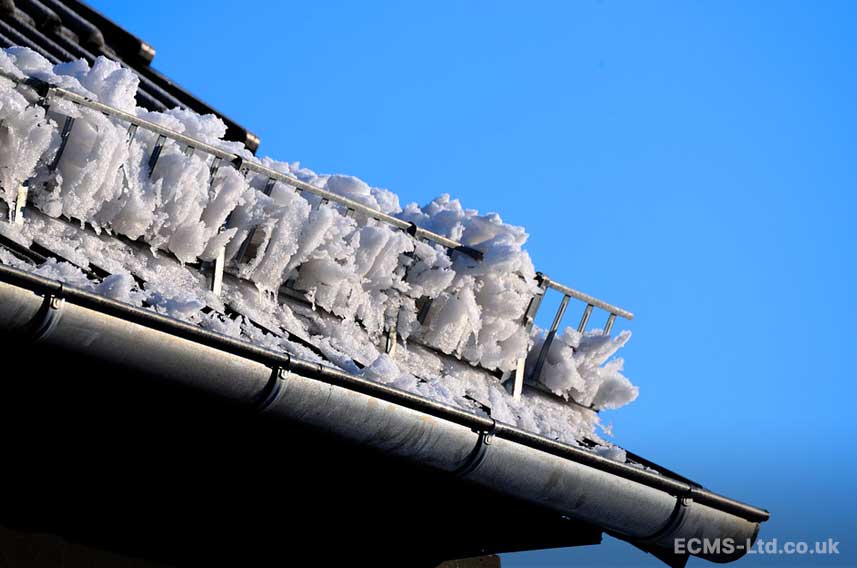
As the saying goes, prevention is better than cure.
Nobody likes cleaning gutters as it can be a tiresome and messy job, but it is important to do it at least once a year.
While this cannot be prevented, you can at least prevent large clogs and related problems.
There are some products which can help in preventing the buildup of waste matter such as leaves and other organic waste, in your gutters.
Here are some examples you may wish to take into consideration:
Gutter Filters
These are basically long pieces of foam which can be slipped easily inside the gutters.
Thanks to these filters any leaves and other matter will not make their way inside the gutters, but the water will still be able to flow through them.
Gutter Guards
These basically clip onto the top part of the gutter, so that any large items are prevented from making their way into them.
Some smaller things may also be blocked away.
Gutter Brush
This is basically a long, flexible brush which can be placed into the gutters.
It is easy to twist and you can manipulate it anyway you like.
Its bristles will work well in preventing debris from entering into the gutters, and at the same time the water will be able to flow without any problem.
The gutter brush is considered to be one of the most effective solutions for houses in the UK.
Unlike the gutter filters and gutter guards you will not need to worry that in case of very heavy rain they may hinder the flow of the storm water through the gutters.
Conclusion
While cleaning gutters is certainly not a pleasant prospect, it is important to see to it as you can avoid many problems.
The above guidelines and tips which we provided should help you go about the gutter cleaning job much better though.
So, off you go! See to your gutters before the stormy weather kicks off!


Request a Callback
Recent Posts
- How to Clean an Oven 01th Apr 2023
- How to Clean & Descale a Shower Head 01th Mar 2023
- How to Clean a Fabric Sofa 01th Feb 2023
- How to Get Rid of Mould 01th Jan 2023
- How to Clean a Mattress Properly 01th Dec 2022
- How to Clean a Washing Machine 01th Nov 2022
- How to Clean a Microwave 01th Oct 2022
- How to Get Blood Out of a Carpet 01th Sep 2022
- What is Access Control? 01th Aug 2022
- What is Hot Water Extraction Carpet Cleaning? 01th Jul 2022

